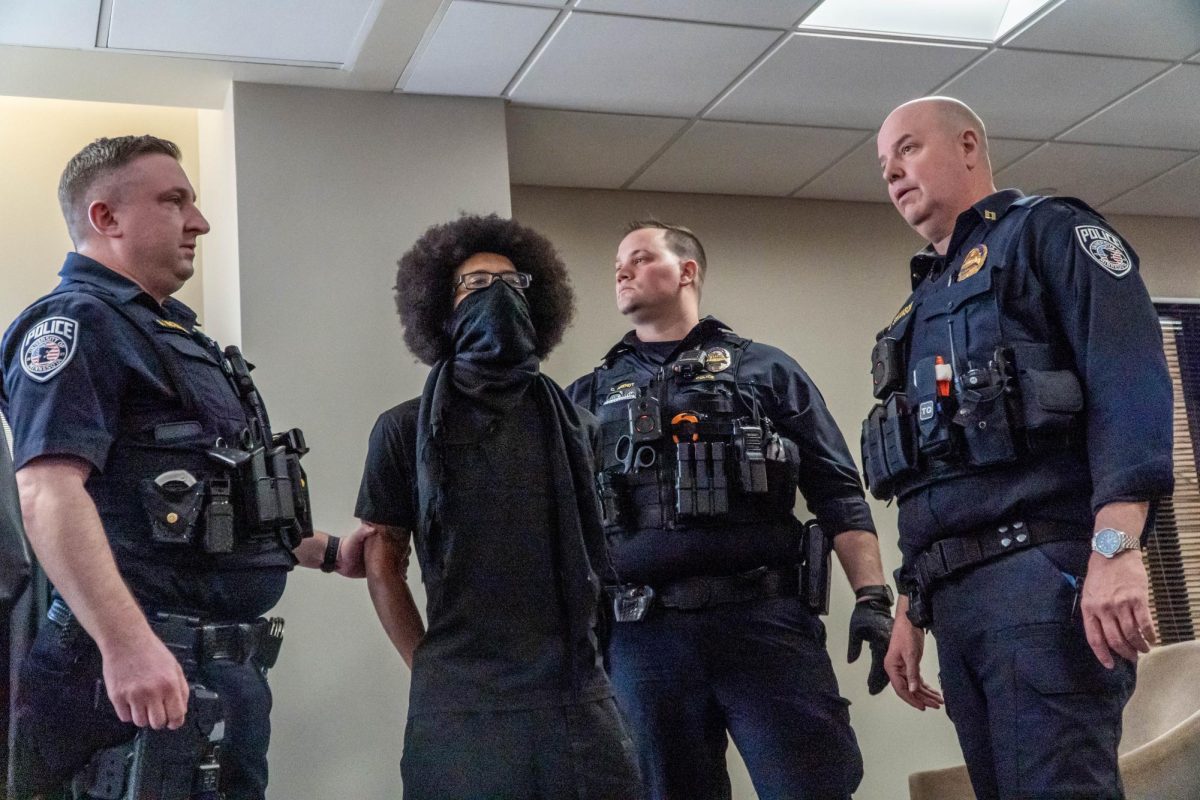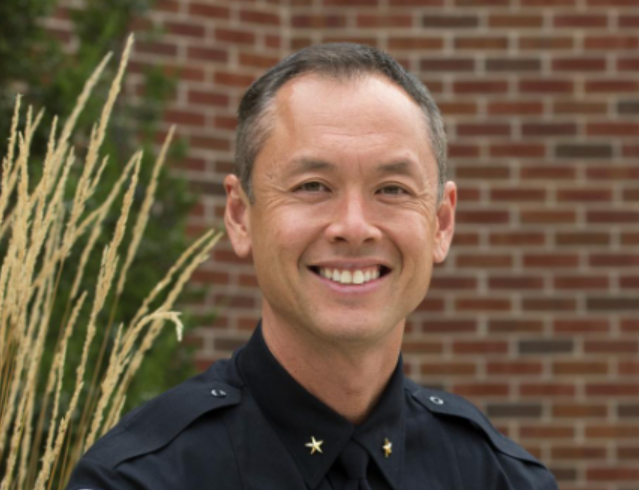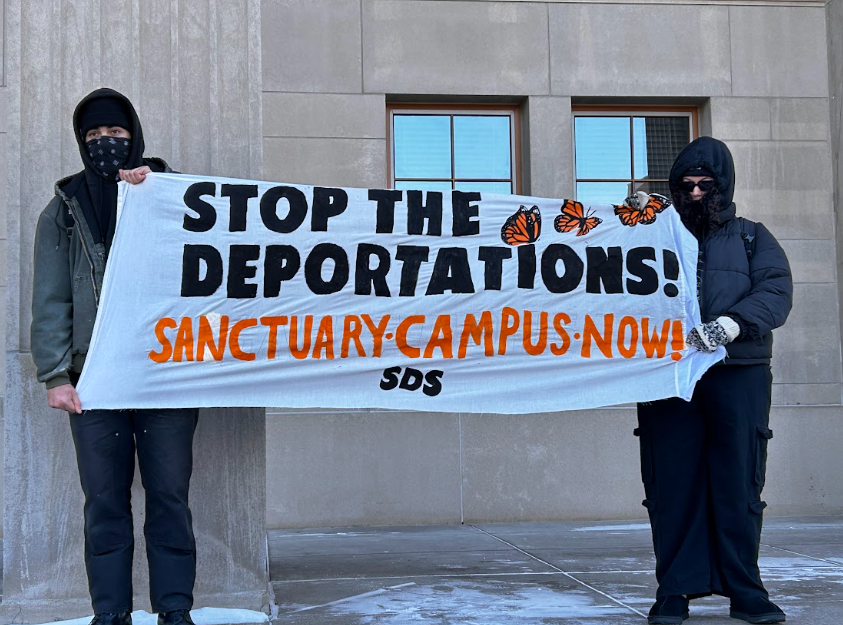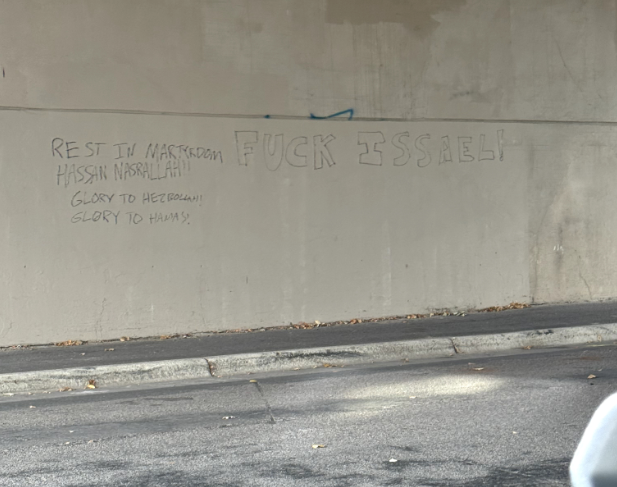The University of Minnesota Police Department’s Community Engagement Team (CET) is composed of civilians, sworn officers and student interns intending to foster a positive relationship between the University community and the University of Minnesota Police Department (UMPD).
Founded in 2015 with the arrival of UMPD Chief Matt Clark, the team expanded beyond the initial three sworn-in officers in 2017 and now includes a civilian community liaison, two graduate student interns, a UMPD officer and a UMPD sergeant, according to Nicholas Juarez, director of community engagement and diversity, equity and inclusion.
“Our primary goal is to establish relationships with everybody that comes to the university, whether it’s faculty, staff, students or visitors,” Juarez said.
The team hosts several community-building events and workshops throughout the year open to students and faculty such as tailgates, lunches and “Coffee with a Cop,” all posted on UMPD’s website.
“When Chief Clark came, he created the community engagement team because he saw a need for more outreach and to coordinate all the safety resources that we have here at the department,” Juarez said. “When he created the community engagement team, the idea was, ‘How do we engage and build relationships with the students, faculty, and staff, besides just the patrol officers that we have?’”
Dillon Gherna, CET’s community engagement liaison, said one of the team’s priorities is maintaining an open avenue of communication between students, community members and UMPD, with the hope of assuring students that they can turn to the police for assistance whenever necessary.
“Sometimes I think people don’t feel comfortable necessarily approaching law enforcement with questions, so we have a unique team where we’re able to engage in an educational manner to answer those questions and provide resources,” Gherna said.
Educational efforts by CET include self-defense workshops aimed at empowering students to take agency over their safety, campus safety resource presentations at parent and student orientations and by-request presentations covering topics such as active threat training, crime prevention and personal safety, according to their website.
In an attempt to address the concerns of student populations whose unique needs often go unaddressed in general public safety presentations, this semester CET added an international graduate student intern to their team in partnership with International Student and Scholar Services.
Nithya Murikinati, an international graduate student from India, was hired by CET to be an ambassador for the safety concerns and needs of the University’s international student population.
According to Murikinati, international students often have different safety concerns and relationships to law enforcement than students from the United States, many of which can be unintentionally overlooked during safety presentations aimed at incoming first-year or transfer students.
Murikinati said one major area of safety concerns CET is hoping to address for international students is confusion around U.S. rules and regulations on driving.
“I didn’t know how to read half of the signs here,” Murikinati said on the difficulties of learning to drive in the U.S. coming from India.
Although she joked about the lighthearted confusions that come with the territory of being an international student studying in a new country, Murikinati pointed out that sometimes misconceptions can lead to potentially harmful misunderstandings.
“I’ve heard stories where some international students didn’t know that you have to stay in the car and wait for the police officer to reach you,” Murikinati said. “So they get out and it gets a little bit uncomfortable because they didn’t know.”
One of the ways CET has addressed this safety information gap, according to Murikinati, is by adding a driving safety presentation to the canvas module offered to international students coming to the University.
While community outreach efforts serve to bridge gaps between law enforcement and the public, in some instances individuals may feel underserved or misunderstood, particularly concerning sensitive topics such as mental health.
Student interactions with law enforcement are not always positive. , Leah Meyer, a University first-year student, recently faced challenges when seeking support from law enforcement during a mental health crisis.
In the fall semester, when her roommate was experiencing a mental health crisis, Meyer said she felt compelled to contact outside help and called 911.
In response to this call, two UMPD officers were sent to the scene, according to Meyer. After calling for backup in the form of three additional officers, her roommate ended up in handcuffs.
“I don’t know why there wasn’t some sort of person who was trained in mental health and not just police,” Meyer said. “When I imagine a mental health crisis, I imagine a medical professional being the person to begin that interaction and not a police officer.”
Meyer added there is a need for increased funding for mental health resources outside of police. She said improving police training in that area or allocating more funds to ensure people receive the support they need is essential and should be prioritized.
“Knowing what police are trained to do, it is to handle the aftermath of crimes,” Meyer said. “I think that when they entered the space, that is the headspace that they went in with. Instead of saying, ‘This person needs our help and we are going to help her,’ they went in with the mindset of, ‘This is a criminal and we need to detain her.’”
According to Meyer, the most important step forward in improving law enforcement’s approach to similar scenarios would be having trained personnel available to address mental health crises within the University setting. She said that in a hypothetical situation where she needed to call 911 again for someone experiencing a mental health crisis, responders should be trained to prioritize assistance over treating the situation as a crime scene.
Although after this incident Meyer said she does not feel she will ever be able to fully trust law enforcement again, positive community outreach such as CET’s self-defense workshops and prioritization of mental health sensitivity training would make strides towards regaining trust that may have been lost during negative experiences.
“If focusing on community engagement doesn’t take away from other resources, I think it’s a positive thing to talk face-to-face with [law enforcement] not in a high-stress environment, it can be positive,” Meyer said.
For some students and their parents, CET is a welcome point of contact to address seemingly unheard complaints.
Two years ago, Erin Brumm, a parent of a University student and a board member of the Campus Safety Coalition, co-founded the organization with five others. The board now includes three additional parents of University students, a graduate student and a professor.
According to Brumm, several of the now-board members met at a University parent safety meeting. After realizing all of them felt like their safety concerns were not being taken seriously by UMPD, they decided to start a 501(c)(3) organization to give legitimacy to their concerns.
“All of us were feeling like we weren’t heard,” Brumm said. “When you have a big enough group of people that aren’t being heard, obviously you have to mobilize to make one voice.”
Brumm said CET is working to form and maintain relationships with not only University students but also other community members.
“They’re working with the students at the U and the leadership at the U, but they are out in the community having those discussions as well,” Brumm said.
According to Brumm, community outreach provides students easier access to safety procedures and information, which benefits everyone in the University community.
“If you have engaged students, informed students, that benefits the community, 100%,” Brumm said.














Lee North
Apr 22, 2024 at 1:26 pm
I spent 30 years as a UMPD officer, retired in 1998, I am totally impressed how the department has reinvented itself, the department could be used as a model on how to keep readjusting to keep pace with the constant changing community needs. Last year my wife and I were given a tour of the department and we were so impressed with the positive attitude of all the officers we met, we left with feeling that the UMPD staff are totally committed to the student population and community as a whole.